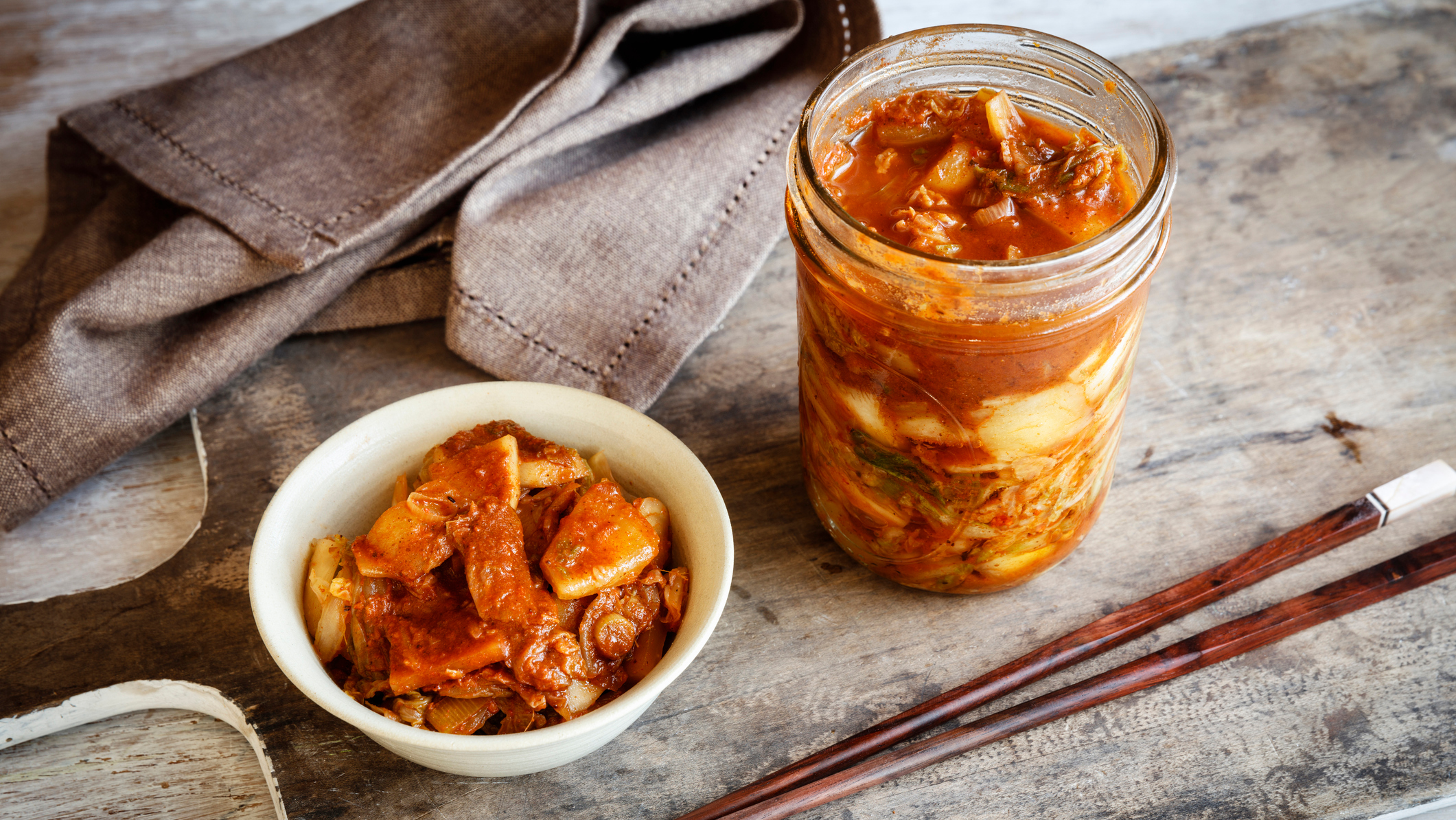How Long Can I Keep Kimchi In The Fridge?
The Korean staple kimchi is one of those amazing fermented dishes that we're seeing in many non-Korean applications lately, such as in tacos or on top of french fries. But as with yogurt, buttermilk, or pickles, for something that seems to depend on aging, we couldn't help but wonder: How long does kimchi last after it's jarred? Forever? Can it go bad? If so, how can you tell? In desperation, we asked a number of chefs, all of whom have some relationship with kimchi.
"There are like 100 different types of kimchi, so it depends... Instead of using kimchi as a noun, I like to use it as a verb: Can we kimchi that?" says Bill Kim, chef and owner at Chicago's UrbanBelly and Belly Q. "It depends on how aged you like your kimchi. Check out the color: If it's orangey, it's more aged. If it's fizzy, and there are bubbles inside the jar, that means it's fermenting. If the kimchi is bright red, it's fresh, with no bubbles, which is how I like my kimchi. I say that like my kimchi like I like my salsa. And you would never say, 'How old do you like your salsa?'"
For our purposes, let's focus on the most common type of kimchi: pogi and paechu, the Napa cabbage-variety jarred with a fiery red marinade. It's the type of kimchi you'd most likely find in the international aisle of your supermarket.
Gabriel Freeman, executive chef at Scofflaw, puts it bluntly: "Kimchi is literally controlled rot. Under the right conditions it will keep for years, changing in texture and flavor as it ages. Some people prefer a very young kimchi, crunchy and bright. Others seek a kimchi that is deeply aged, soft, funky, writhing with lactobacillus."
Something deeply aged, soft, funky, and writhing with bacteria sounds like it's best reserved for the most adventurous of eaters. But other chefs say it's unlikely your old, funky kimchi is actually bad.

Nanam Yoon Myszka and her husband Ken run a number of restaurants in the Central Illinois town of Bloomington under the Epiphany Farms umbrella—and all those restaurants, thanks to Myszka's heritage, feature Korean influence in some of the dishes. Myszka said that in South Korea, she would often frequent restaurants that specialize in long-fermented kimchi, places that proudly advertised their kimchi has been aged for three years or more.
It's never that pronounced a problem amongst Korean families, just by the fact they consume such large quantities so quickly that kimchi sitting in a fridge for months is not a frequent problem.
Myszka doesn't have a definitive answer for just how long you can keep kimchi in the fridge, but she did offer a few strategies to keep it as fresh as possible.
First, if you do buy a large jar of kimchi, you should avoid constantly opening and closing the jar and exposing it to air—she suggests scooping a few large spoonfuls into a separate container, take what you need over the course of a week, and only replenishing from the master jar when you need to.
Myszka also said you should always push the cabbage as far down the jar as possible, until the red liquid line comes above the cabbage. Having that pickling liquid soak in the vegetable will extend its shelf line.
A sign that kimchi has aged well is when it loses its crispness and gets mushy. If you express hesitation eating this straight, Myszka said you should throw it in a stew, like a kimchi jjigae. Or you can turn it into fried rice, or better yet, sautée it in a cast-iron skillet with pork belly.
Worse comes to worse: It's pretty cheap, so when in doubt, throw it out. Or you can listen to the advice of a Korean mother: "If I find some white [growth] on the cabbage leaves," Myszka said, "my mother would just say, 'wash it and eat it!'"
